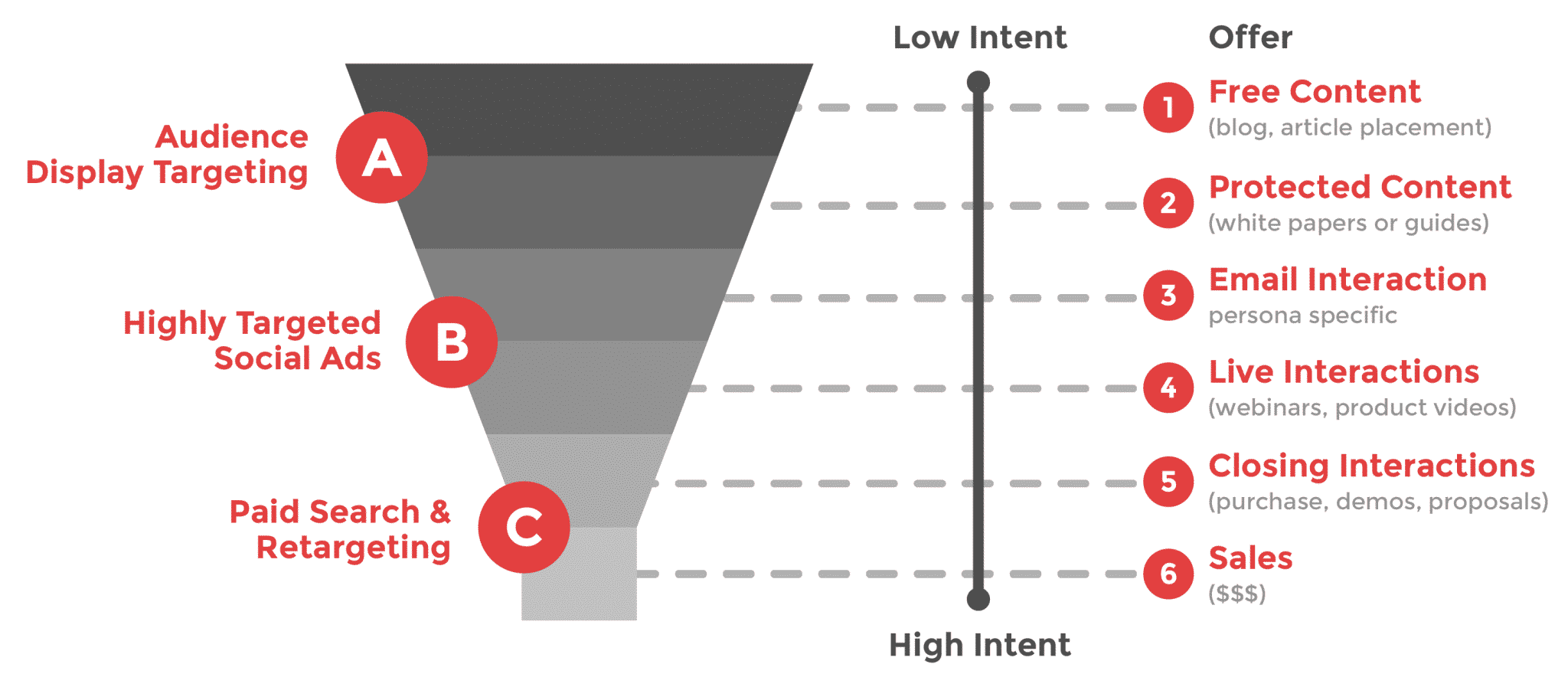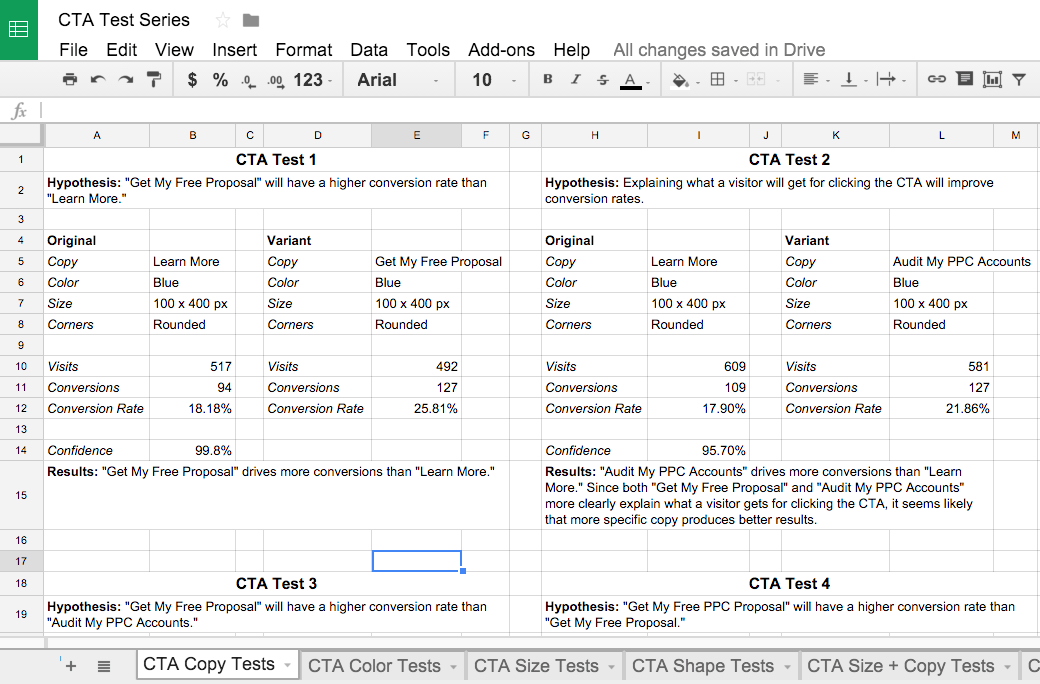How to Create a Website Testing Strategy That Gets Results
by Aden Andrus • September 25, 2019
Creating a website is a ton of work. Writing content, choosing images, building a theme, crafting pages, making sure everything looks and works right over and over again…by the time you’re done, you’re ready to be done.
Unfortunately, though, no matter how much time, effort and money you put into your site design (or redesign), there’s still no guarantee that it’ll get you the results you need. You might love your site, but if it doesn’t work for your customers—it doesn’t work.
That means you need a testing strategy.
Once all of the digital dust has cleared from building your website or landing page, it’s time to start thinking about how you can optimize things. Now, thankfully, testing your website doesn’t have to be nearly as much work as actually building it—as long as you approach things the right way.
In this article, we’re going to teach you how to do just that. We’ll help you figure out what you want to test and identify which tests to run first. That way, you can test and optimize your website in the smoothest, easiest way possible. Let’s get started!
What is the Point of Your Testing Strategy?
Before you can really start planning out your testing strategy, you need to figure out what the goal of your testing actually is. Do you want more people to make a purchase? Fill out a form? Use your chat feature? Visit key pages on your website? Scroll through more of your content?
You can optimize your site for any of these criteria and so much more. But, if you don’t know what you’re trying to achieve with your tests, it will pretty hard to put together an effective testing strategy.
So, before you start mapping out your testing strategy, ask yourself the following:
- What am I trying to achieve?
- What are my top priorities as a business?
- How will improving my site this way help me achieve those priorities?
- What does success look like?
Depending on what your business is and where it is at, your testing strategy goals can be short or long, focused on the top of your marketing funnel or the bottom, etc. But, whatever your goals are, it’s important to understand what you’re trying to achieve and how it fits into your long-term business objectives.
Deciding What to Test
A good testing strategy follows the scientific method: you come up with a hypothesis, identify your variables, run your test, learn and repeat.
But, berfore you can do any of that, you have to figure out what you want to test.
What exactly you want to test will depend on you and your business. If your goal is to get more leads, you’ll want to focus on your page headers and headlines, not your footer elements.
Here are few key site or page elements that you may want to think about as you decide what to test:
Headlines
Your headlines are one of the first things people see on your site. They set the tone for your page and tell people what to look for and expect from the rest of your content (and possibly your business).
As a result, testing your headlines can give you a ton of insight into what sort of messaging your visitors respond to. You can try all sorts of different things here: emotional appeals, focusing on problems and solutions, creating fear or enthusiasm.
The great thing about testing your headlines is that you can often learn things that will apply to every aspect of your marketing. If people on your site respond better to emotional appeals but your ad copy is focused on a technical challenge, you may want to change more than the headlines on your website.
Call-to-Action
Your call-to-action—or “CTA”—is how you get people to do something. A call-to-action can be anything from “Buy Now” to “to learn more about this, click here”. The important thing is, you need to make it clear what your site visitors should be doing.
There are lots of ways to test out your CTA. Here are just a few ideas:
- Copy. Is your CTA clear and easy to follow? Try changing up your language, making your CTA longer or shorter, or focusing on what people get for acting.
- Placement. How easy is it to find your CTA? Try putting it in different places, like your header, footer or anywhere in between.
- Frequency. Do you have enough CTAs? Too many? Depending on what type of page people are on, you may want to test adding more CTAs or taking a few out.
- Visual Cues. Is your CTA easy to find? Try a contrasting color, a more obvious shape or changing the page around the CTA in a way that help people notice it.
The right CTA can go a long ways towards helping you reach your goals. After all, your CTA is how you tell people what you want them to do, which is usually intimately tied to your testing strategy goals.
Copy
Like your headlines, the actual copy on your page is how people learn about your business, what it does and what they can expect from you or your products.
However, how much copy and what sort of copy you need can be really hard to predict.
Some audiences prefer shorter copy. Some prefer long copy. Some products or services require very little explanation, while others are very hard to sell in a sentence or two. Sometimes, you may even be accidentally creating doubt with your copy!
The only way to know is to test.
The good news is, of all the site elements on this list, your actual copy can be one of the easiest to test. Try removing a section of copy and see how people respond. Add a new section. Revise your copy or move things around. There are so many ways to test your copy and they can all teach you a lot about your target market.
Images
Like the actual words on your site, your images (and video) are a key part of how people perceive your business. A picture can convey things (especially emotion) in ways that words could never duplicate.
As a result, the images and video you put on your page can have a huge positive or negative impact on how people respond to your website. The right image or video in the right place can make a sale. The wrong one can create distraction, frustration and confusion.
Perhaps even more than your actual copy, images and videos can have a big effect on your customers, so they’re a great, easy thing to test on your website. This is especially true if you have a hero image of some sort at the top of your page with the headline. You can only cram a few words into your headline, but a picture is worth a thousand words. Choosing the right hero shot can be the key to setting the right tone on your website.
Pricing
How you describe your pricing can be just as important as what your actual prices are. Since this is where your business makes its money, it can pay big time to test out different ways of presenting your pricing.
Change up your value proposition. Highlight discounts and sales. Make it easy for people to compare options. Set up your pricing in a way that makes your most profitable option look as appealing as possible. There are lots of different ways to test your pricing, so this is can be an easy way to make a big difference to your business’s bottom line.
Trust
One of the biggest factors in whether or not people will do what you want them to is whether or not they trust your business. People are constantly asking themselves whether or not your company is trustworthy, so figuring out how to make the answer “YES!” can go a long ways towrads helping you acheive your testing strategy goals.
Fortunately, there are a lot of easy ways to build trust that you can test out. For example, consider adding or tweaking the following:
- Trust badges or security seals
- Testimonials
- Reviews
- Ratings
- User-generated content
- Return policies
- Privacy notices
Finding the right way to build trust with your target audience can dramatically improve the performance of your website, so it’s a great element to include in your testing strategy.
Creating Your Testing Strategy
Once you’ve identified your goals and figured out what you want to test, write it all down—it’s time to create your testing strategy!
The first thing you’ll want to do is prioritize your different testing ideas. Ideally, you want to set up your testing strategy in a way that helps you get results as quickly as possible while learning as much as possible along the way.
To do that, you have to prioritize.
Unfortunately, as much as 70% of A/B tests will be a dud. You won’t see an improvement in performance, but if you have the right testing strategy in place, those tests won’t be a waste. Instead, they’ll all be a part of a journey that leads you towards optimum results—even if every step on that journey isn’t a win on its own.
In addition, testing takes time. If you don’t prioritize your tests, you can waste a lot of time running the wrong tests at the wrong time. You won’t get to the results you need very quickly, which means you’ll be missing out on a lot of business opportunities.
So, with all of that in mind, here are a few questions you can ask yourself to help you prioritize your tests:
Is this an obvious change?
While in an ideal world, you’d test everything, some changes are so obviously beneficial that you don’t really need to waste time testing them.
For example, if there are ugly, obviously distracting or unprofessional elements on your site, just get rid of them! Just create a backup of your original version—in case your page performance inexplicably drops—and then fix things.
This applies to all sorts of things: images, whitespace (or a lack of whitespace), copy, irrelevant text, social links, etc. If it’s hard to imagine how a site element is helping you, it’s probably hurting you—so get rid of it!
Will this test help me make more money?
While increasing leads and/or sales aren’t the only valid site testing goals, they’re some of the most important. So, as you’re evaluating your testing ideas, put a priority on tests that help you make more money.
In general, this means that you should test your money-making pages first: landing pages for campaigns, checkout pages, sales pages, promotion pages, etc.
From there, move backwards up your funnel. If your blog isn’t a direct source of revenue for your business, it’s probably less important to test out blog content length than it is to test your product page design or web forms.

Ultimately, the quicker you can start making more money as a result of your testing, the happier you (or your boss) will be. The long-term goal of any marketing effort is to make more money, so that should be the main focus of your testing strategy, too.
What is my “low-hanging fruit”?
There are a lot of little things you can test on your website: fonts, images, colors, etc. These things certainly can improve the performance of your site—Google has tested over 40 shades of blue for their links to optimize clickthrough rates—but most of the wins you get with these kinds of tweaks will be fairly minor.
Instead, early in your testing strategy, you want to prioritize the “low-hanging fruit”—the elements on your site that are easy to test and have a high likelihood of producing big results.
Unlike the obviously wrong elements that we discussed earlier, low-hanging fruit testing opportunities are usually site elements that are important to your businessthat don’t have a clear “right” or “wrong”.
For example, your current headline might be decent—there’s nothing obviously wrong with it—but you don’t really know whether or not it’s the “right” headline for your website. There are a lot of different types of headlines and—since your headline is one of the first things people see on your site—finding the “right” headline could yield huge benefits.
As with the money-making parts of your site, focusing on low-hanging fruit is one of the fastest ways to get resutls from your testing strategy. You can often get these sorts of tests up and running in a matter of days. What you learn from these tests will educate your entire testing strategy, so it’s almost always a good idea to focus your efforts on these tests first.
Formalizing Your Testing Strategy
Once you’ve identified the tests you want to run first, it’s time to create your testing process. If you want your testing strategy to be effective, you need a way to track everything you’re doing and what you’re learning.
There are a lot of ways to do this, but the easiest is to simply create a spreadsheet like this:

This spreadsheet is designed for CTA testing, but you can easily create a variant of this to track all of your different types of tests.
The beauty of a system like this is that it’s so easy to keep track of what you’re doing and what’s coming next. As you can see above, each hypothesis and testing concept is outlined, so the testing strategy basically runs itself. As soon as one test is done, you know what you’ve learned and what you’re going to test next.
It definitely takes some work to create a formal testing strategy like this, but once you’re done, it makes life fairly simple. Perhaps the most difficult part of creating a testing strategy is actually coming up with your plan and the different variants you want to test, so tracking things this way makes testing a breeze.
Conclusion
A good testing strategy is often the difference between a successful website and a failure. No matter how much you like your site and landing pages, you are not your customer. The only way to figure out what your customers respond to best is to test.
By the way, if you’d like some help coming up with a testing strategy for your business, let us know here or in the comments. We’d love to help!
Have you tried to create a testing strategy before? How did things pan out? What recommendations would you make? Leave your thoughts in the comments.





